Remington 870 Tac-14 14" 20 Gauge Pump Action Shotgun, Black – R81145 For Sale
$449.99
The Remington 870 Tac-14 14″ 20 Gauge Pump Action Shotgun (Black – R81145) is a compact yet powerful option for home defense, leveraging the trusted reliability of the Model 870 series. It is designed for efficiency in personal protection, featuring a Raptor pistol grip for firm control and a Magpul M-Lock forend for enhanced practicality and ease of use. Engineered to deliver strong, threat-stopping shots, the Tac-14 offers effective home defense in a manageable size.
Is the Remington 870 TAC 14 legal?
The legality of the Remington 870 TAC 14 depends on jurisdiction and specific local, state, and federal regulations. In the United States, the Remington 870 TAC 14 is generally considered a “firearm” under federal law and not a shotgun, because it does not have a stock and is under 26 inches in overall length. However, its legal status can vary:
1. **Federal Law**: Under U.S. federal law, as enforced by the Bureau of Alcohol, Tobacco, Firearms and Explosives (ATF), the Remington 870 TAC 14 is classified as a “firearm” but not as a “short-barreled shotgun” since it meets certain ATF criteria, thus not requiring a National Firearms Act (NFA) tax stamp.
2. **State and Local Laws**: Certain states and local jurisdictions may have laws that further regulate, restrict, or prohibit firearms like the TAC 14. It’s important to check your specific state and local laws.
It’s essential to consult local regulations or legal counsel to determine the specific legal status in your area.
What is a Remington 870 TAC 14?
The Remington 870 TAC 14 is a variant of the popular Remington 870 shotgun, known for its compact design. It features a 14-inch barrel and a Raptor pistol grip rather than a traditional stock, which classifies it as a “firearm” rather than a shotgun under U.S. federal regulations. This makes it a short-barreled firearm that does not require a tax stamp under the National Firearms Act (NFA). The TAC 14 is designed for personal defense and tactical applications, offering maneuverability in confined spaces.
Is the Remington TAC 14 reliable?
The Remington TAC-14 is generally considered a reliable firearm by many users for its intended purposes. It is praised for its build quality, functionality, and ease of use. However, like any firearm, experiences can vary based on individual use, maintenance, and specific conditions. It’s recommended to perform regular maintenance and use appropriate ammunition to ensure reliability. Potential buyers or users should also consider seeking out reviews and firsthand accounts to form a comprehensive opinion.
Are Remington 870 still being made?
Yes, the Remington 870 is still being manufactured. After a brief pause in production due to Remington Outdoor Company’s bankruptcy and the subsequent sale of its assets, the Remington 870 shotgun continues to be produced by RemArms, the company that acquired the manufacturing rights.
Do you need a tax stamp for a Remington TAC 14?
No, you do not need a tax stamp for a Remington TAC-14. The Remington TAC-14 is classified as a “firearm” under the National Firearms Act (NFA) because it has a 14-inch barrel and an overall length greater than 26 inches. It does not fit the classification of a short-barreled shotgun, which would require a tax stamp. Always ensure compliance with local and state regulations, as these can vary.
Does the military still use Remington 870?
Yes, the military still uses the Remington 870 shotgun. It has been a reliable tool for various military applications due to its durability, ease of use, and effectiveness in close-quarters situations. Different branches of the U.S. military and other armed forces around the world may use variations or modified versions of the Remington 870 for specific needs.
How many shells does a TAC 14 hold?
The TAC 14, a firearm manufactured by Remington, typically holds 4+1 shells, meaning it can hold four shells in the magazine tube and one in the chamber.
Why is the Remington 870 so popular?
The Remington 870 is popular due to several key factors:
1. **Reliability**: The robust construction and design of the 870 make it highly reliable and durable, which is essential for both enthusiasts and professionals.
2. **Versatility**: It is available in numerous variants to suit different purposes, such as hunting, sport shooting, home defense, and law enforcement.
3. **Ease of Use**: Its pump-action mechanism is simple and intuitive, making it accessible even to beginners.
4. **Customization**: Numerous aftermarket accessories and parts are available, enabling users to customize their shotgun to meet specific needs or preferences.
5. **Affordability**: The Remington 870 is generally more affordable than many other shotguns in its class, providing excellent value for its performance.
6. **Proven Track Record**: Since its introduction in 1950, the 870 has built a strong reputation and a history of widespread use, further enhancing its appeal.
These attributes have contributed to the Remington 870’s longstanding popularity.
Is a 14 inch shotgun barrel legal?
In the United States, the legality of a 14-inch shotgun barrel typically falls under federal and state regulations. Under the National Firearms Act (NFA), a shotgun with a barrel length less than 18 inches is classified as a Short Barreled Shotgun (SBS) and is subject to additional regulations. To legally own such a firearm, you must register it with the Bureau of Alcohol, Tobacco, Firearms and Explosives (ATF) and pay a tax stamp. Additionally, state laws may vary, so it’s important to check local regulations to ensure compliance. Always consult with a legal expert or local authorities for the most accurate and personalized advice.
How much damage does the TAC shotgun do?
The damage of the Tactical Shotgun in games like Fortnite can vary depending on the version of the game and the rarity of the weapon. Typically, the Tactical Shotgun’s damage ranges from about 71 to 87 per shot, depending on the rarity and version. However, these values are subject to change with game updates and balancing patches. It’s always best to check the latest patch notes or reliable gaming sources for the most current information.
Are Remington guns worth money?
Yes, Remington guns can be worth a significant amount of money. The value depends on various factors such as the model, age, condition, rarity, and historical significance. Collectible models or those with unique features tend to be worth more. It’s advisable to consult a firearms appraiser or do thorough research to determine the specific value of a Remington gun.
What is a Remington TAC 14 classified as?
The Remington TAC-14 is classified as a “firearm” under federal law in the United States. It is not labeled as a shotgun due to its barrel length (under 18 inches) and overall length (under 26 inches), which classifies it as a non-NFA (National Firearms Act) item, specifically as a “firearm.” It is important to note that specific state laws may differ and could classify it differently.
Is a 14 inch barrel shotgun legal?
The legality of a 14-inch barrel shotgun depends on the laws and regulations of the country or region you are in. In the United States, under federal law, the National Firearms Act (NFA) regulates shotguns with barrels shorter than 18 inches. A shotgun with a barrel length of 14 inches would be classified as a “short-barreled shotgun” (SBS) and is subject to specific regulations. To legally own such a shotgun, you would need to file the appropriate paperwork, pay a tax, and receive approval from the Bureau of Alcohol, Tobacco, Firearms, and Explosives (ATF).
State laws can also impose additional restrictions or outright bans, so it’s important to also check the laws specific to your state or region. In other countries, the legality may vary widely, so you’d need to consult local firearms laws to determine if owning such a shotgun is allowed.
What is the ATF classification for Remington TAC 14?
The Remington TAC-14 is classified by the Bureau of Alcohol, Tobacco, Firearms and Explosives (ATF) as a “firearm.” It does not fit the traditional definitions of a shotgun or a rifle under the National Firearms Act (NFA) because it does not have a shoulder stock and has a barrel length of less than 18 inches, measuring 14 inches. However, because it is over 26 inches in overall length, it is not classified as a short-barreled shotgun, allowing it to avoid NFA restrictions and registration requirements.
Can you hunt with a Remington 870?
Yes, you can hunt with a Remington 870. It is a popular and versatile pump-action shotgun commonly used for hunting various types of game, including birds and small to medium-sized mammals.
| Product Line | Tac-14 |
|---|---|
| Action | Pump Action |
| Overall Length | 26.3" |
Be the first to review “Remington 870 Tac-14 14" 20 Gauge Pump Action Shotgun, Black – R81145” Cancel reply
Related products
Remington 870 Tac-14
Remington 870 Tac-14 12 Gauge 14.5" Pump Pistol Grip – R81231
Remington 870 Tac-14
Remington 870 Tac-14 Pump Action 12 Gauge Shotgun With Raptor Grip, Black – R81230
Remington 870 Tac-14
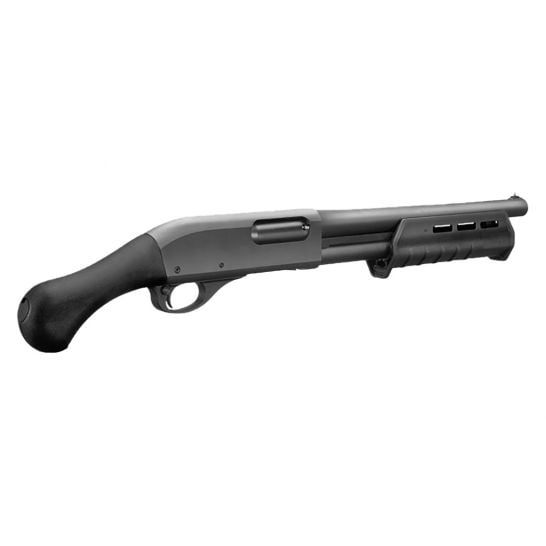
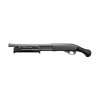
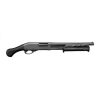
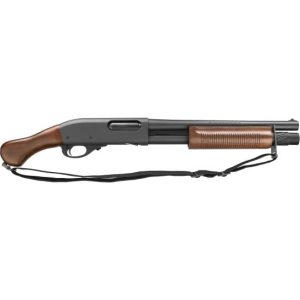
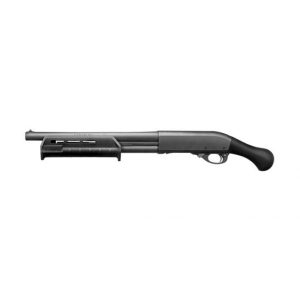
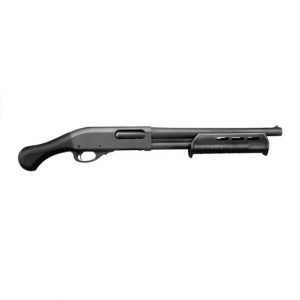
Reviews
There are no reviews yet.